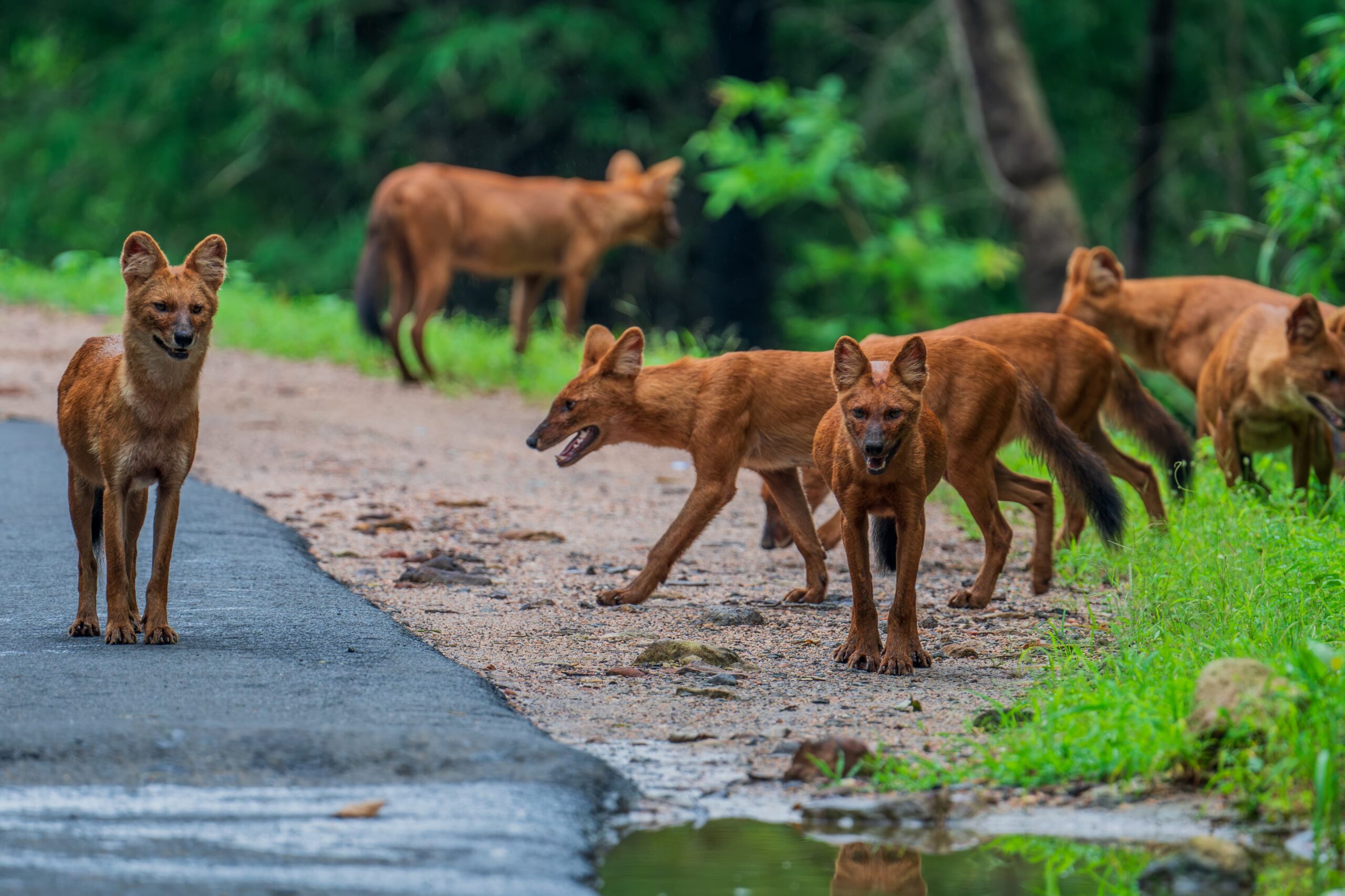Charismatic carnivores like tigers and leopards have always been an eye-catching sight for all the wildlife buffs, yet the broad list of fauna has many more jewels. One of them being an endangered species of dog – Wild dogs or Dhole.
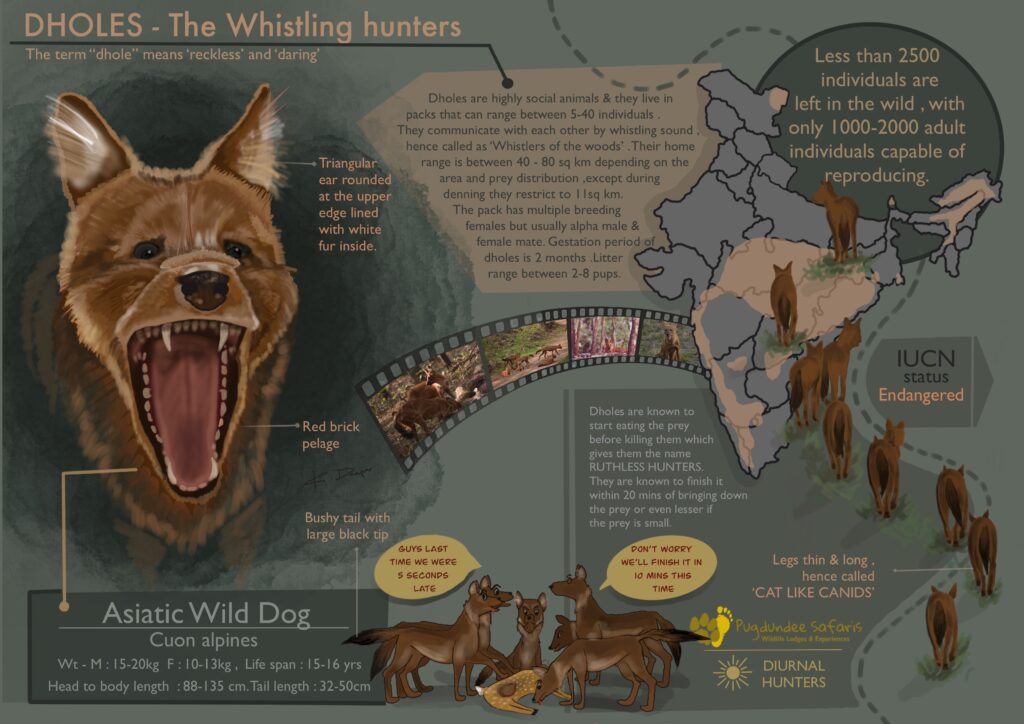
Wild dogs have been romping around the planet for over 12,000 years now, which means they have been hanging around since the Pleistocene period, also known as the Last Ice Age. Without facing any survival issues, this apex predator has its range in the vast habitat of Bhutan, Southern China, India, Malaysia, Tibet, and Mongolia and throughout Southeast Asia.
There are about 10 to 11 subspecies of dholes which are found all across the globe. Two are listed as endangered and two are on the verge of extinction. However, the Asiatic wild dog is the most common subspecies found in India.
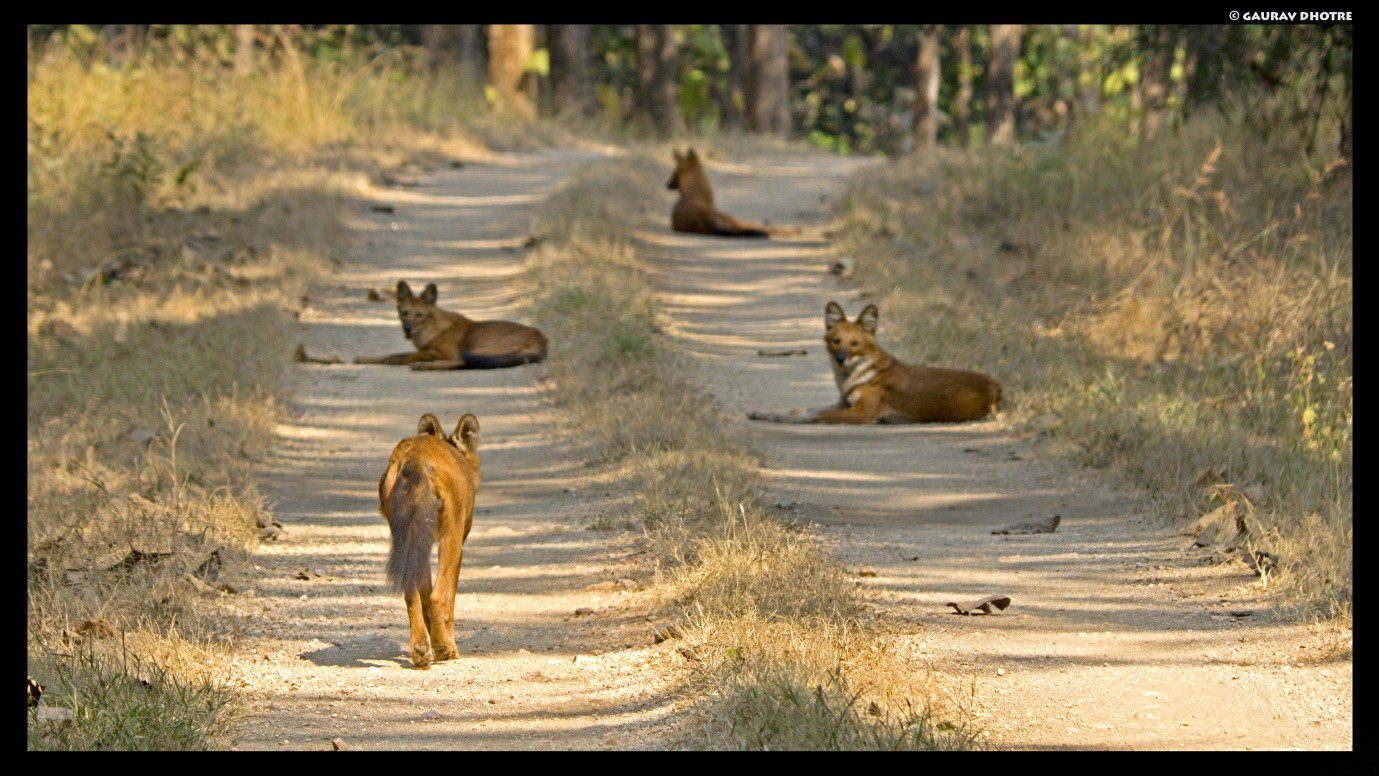
Apart from the alluring appearance and ravishing features, this social carnivore had a gory image of being a lawless, ruthless hunter of the Indian jungles, like many other species in the wild who often tend to be misunderstood. With this unwelcome historic record, this irreproachable apex predator was butchered off , until they were brought under the IUCN red list of endangered species and is now protected under Schedule II of the wildlife Protection Act, 1972 in India.
Wild dogs are highly adaptable to their environment and generally found in the deciduous, evergreen and the alpine steppes. Fewer than 3000 adults left in the wild, India perhaps sustains the highest number of dholes, which are widely distributed in three major landscapes- Western Ghats, Central India and Northeast India.
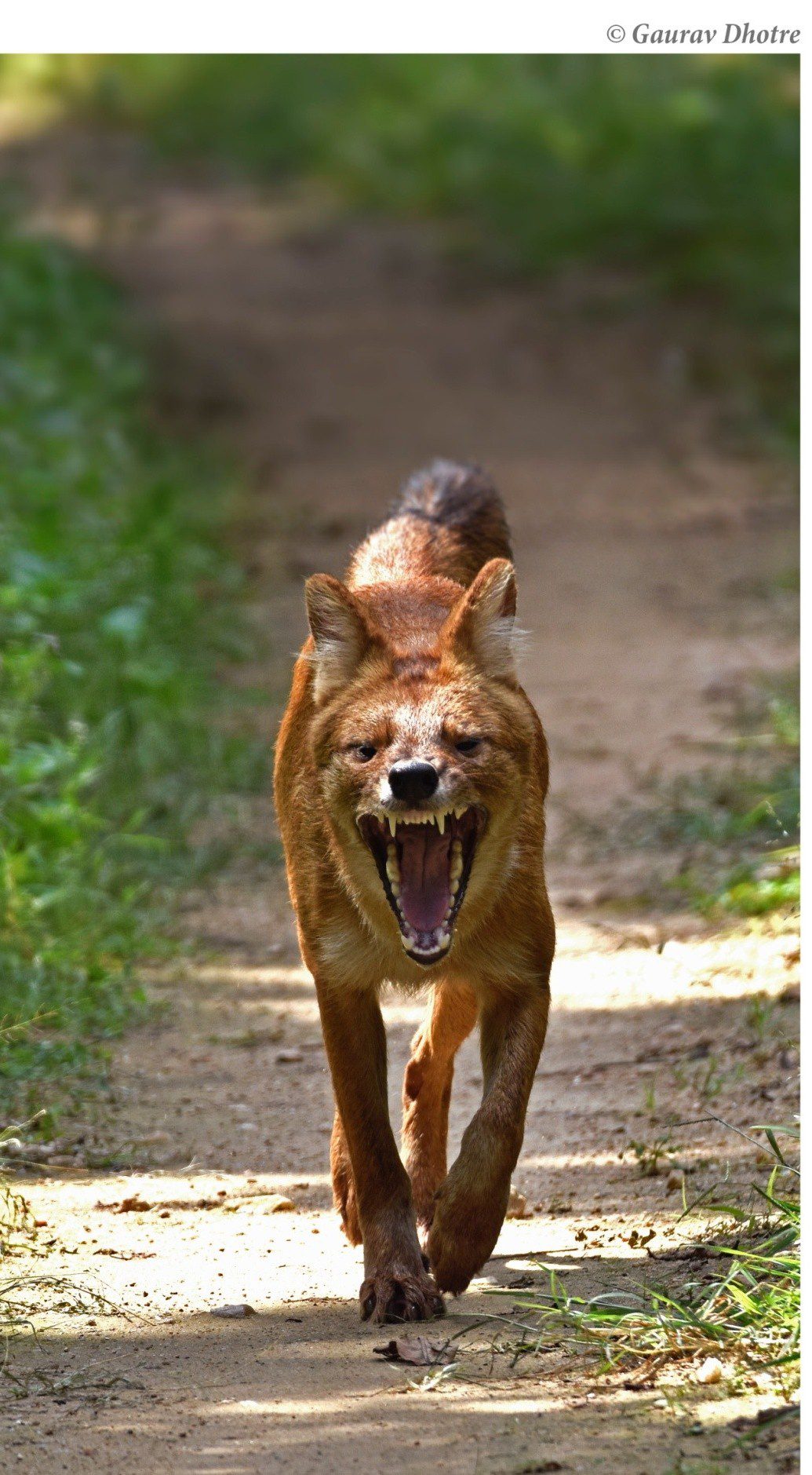
Species, Name and Origin
The term ‘Dholes’ originated from the ancient Asiatic origin; which means “reckless” or “daring”, and it did fit in with their unbridled, courageous personalities.
Dholes were placed in the family of Canidae. The Latin name of Dhole is Cuon Alpinus; Cuon meaning “dog” and Alpinus meaning “mountainous” which defines them as mountain dog. Having several different names including Asiatic Wild Dog, Indian Wild Dog, Red Dog, Mountain Wolf etc. They are known to have about 64 native names in 38 languages, which pretty much depicts their habitat range.
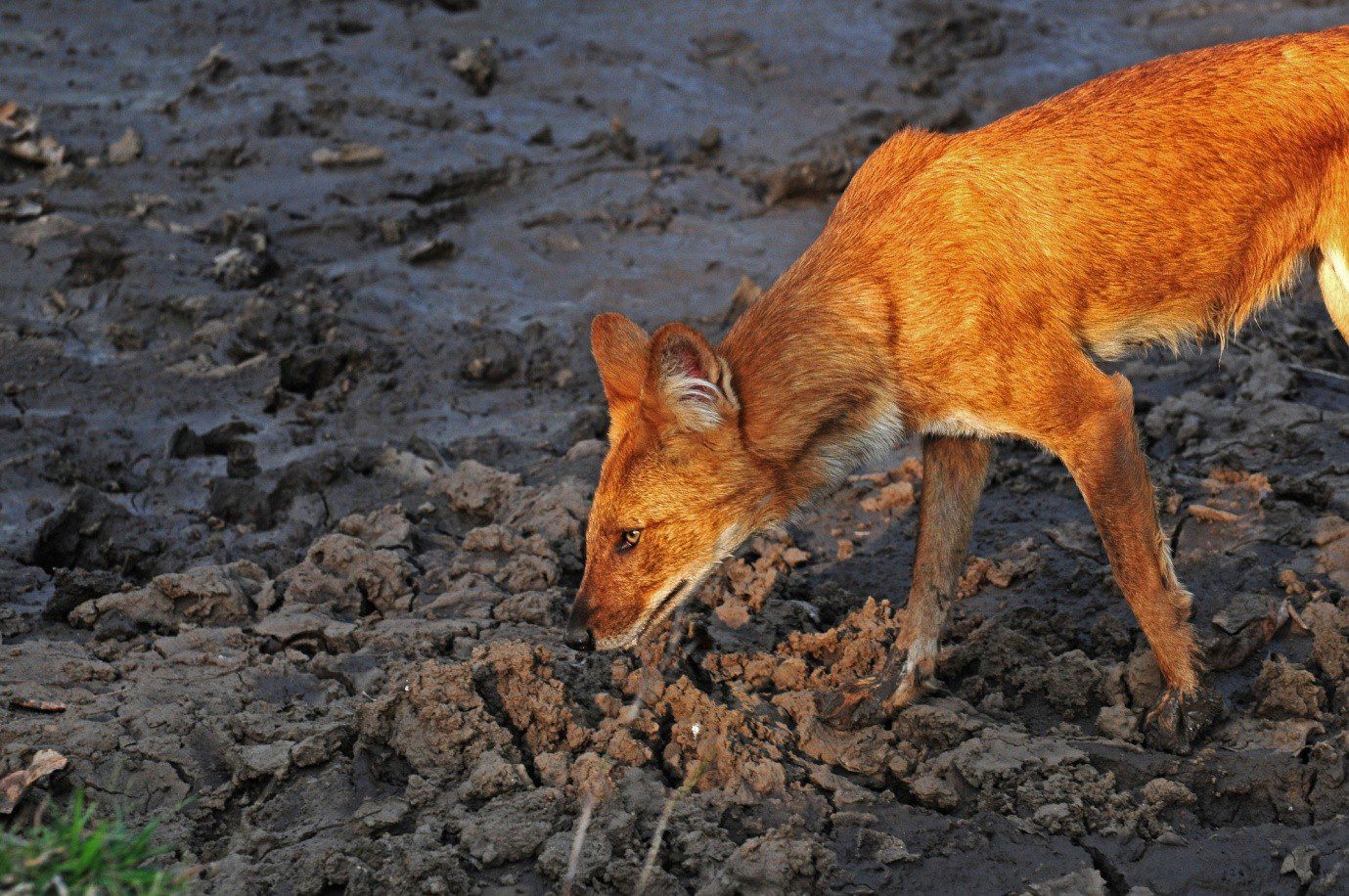
Characteristics
Dhole is a sleek, reddish-brown medium sized dog that measures up to around 20 inches with a bushy black tail which adds up to a foot and half. Males are generally muscular than females, and interestingly dhole is the only member from the genus cuon. But it does share some physical characteristic with other canids like Red Fox and Indian Gray Wolf.
Their broad head and exceptional sharp jaws give them an iconic facial appearance, which makes their body look more, aligned. Unlike other species of dogs which have 42 teeth, Dholes lack in one pair of lower molars and their upper molar only have one cusp, i.e. a fold of the cardiac valve.
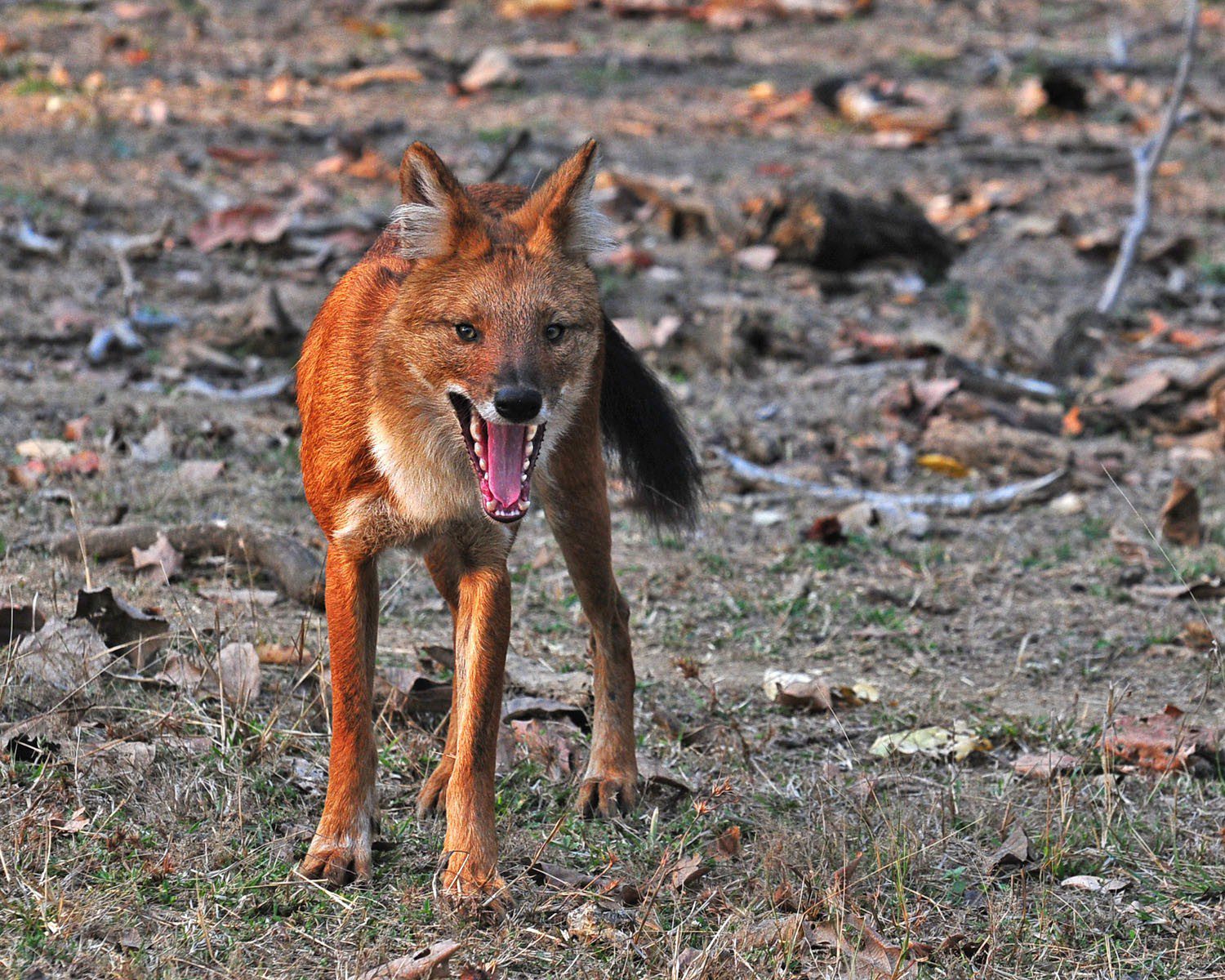
The Dhole Clan
This species tends to live in groups with numbers ranging from 2-25 individuals. Every clan has a dominant and monogamous pair, which inherits the pups. Sometimes two different clans join together so you might come across with a bigger pack of wild dogs.
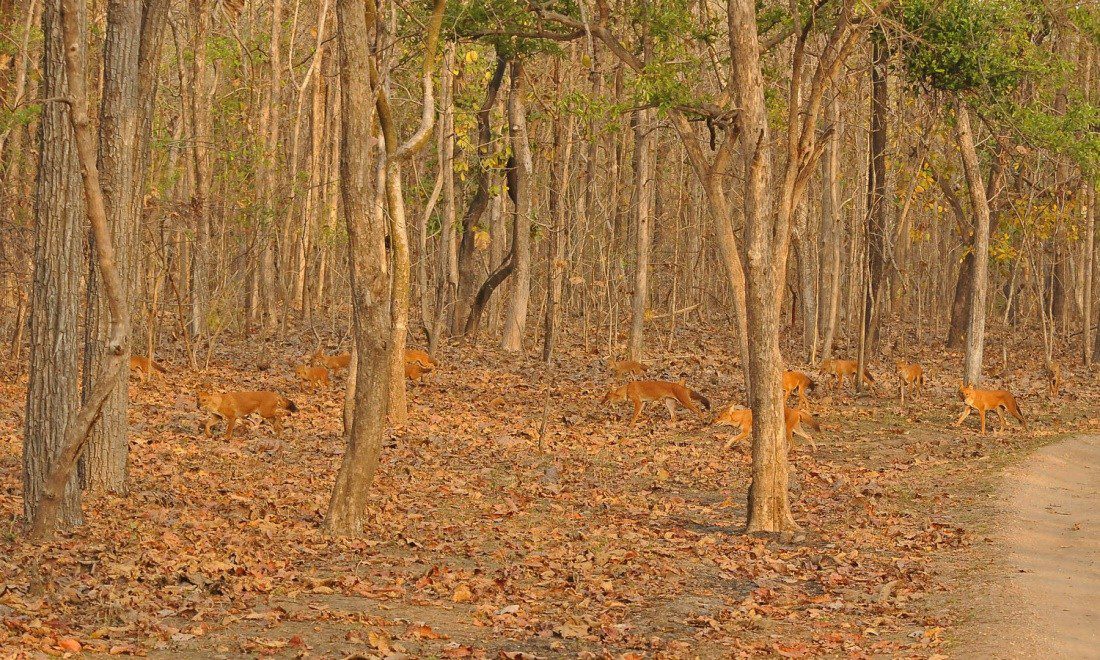
Communication – Whistlers of the Woods
These fearless, communal pack hunters have a unique way of communicating and showing their friendliness.
They are often seen wagging their tail and licking each other face to greet one another, like most dogs.
They are known to be the whistlers of the wood as they cannot bark or howl. They have an eerie whistle to communicate with each other. They also use a variety of other noises, including clucks and high-pitched screams that are usually not seen in canids.
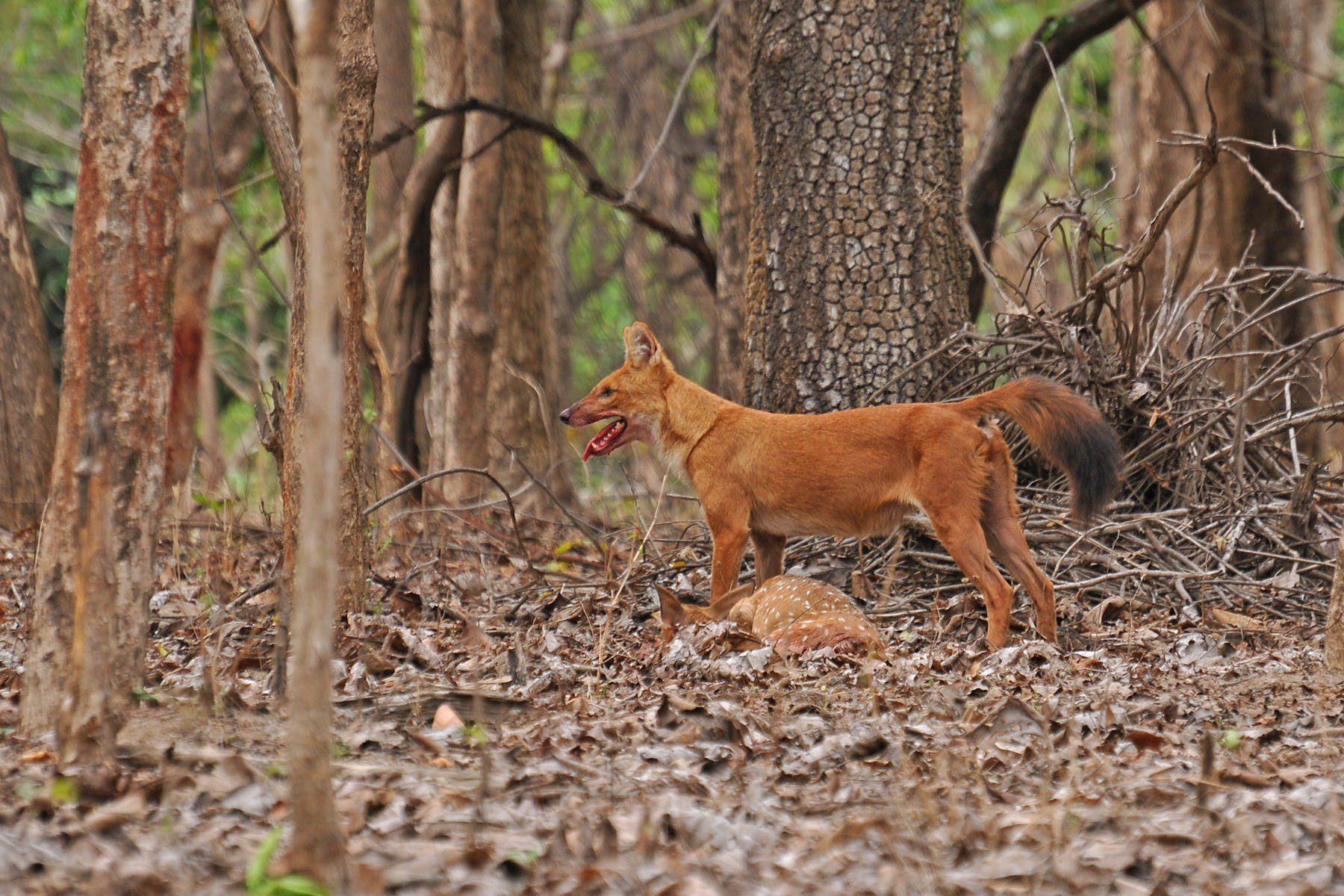
Best places to see wild dogs in India
Wild dogs are widespread throughout the Indian subcontinent, but there are some places which provide the best chances to spot these rare species. Pench National Park, Satpura National Park and Tadoba National Park in Central India are some of the best places to see wild dogs in India. Bandipur and Nagarhole National Park in southern state of Karnataka offer best sightings.
Dholes are majorly found in Central India and Western and Eastern Himalayas. They can also be found in Arunachal Pradesh, Assam, Meghalaya and West Bengal. Meanwhile they are spread unevenly in the Himalayas and northwest India.
Interesting Facts about the Whistlers of the Woods
- Dholes will always make their den near the shallow river bed, or a stream as they love to relax in the water, even when the temperature go down to zero degrees.
- Their effective communication, using various clucks and screams makes them potent pack hunters of the Indian Jungles. It is believed these sounds help keep the pack together.
- When threatened, Dholes pucker their lips forward in a snarl, raising their hackles, while their tail remains horizontal.
- Dholes tend to feast on their prey even before killing it.
- These deft hunters can ferociously take down the prey eight times bigger than the size of their own weight. Dominant males are often seen fighting off with tigers and leopards.
- Excellent athletic runners and fast swimmers too. They can jump big heights too.
- They are territorial and require large territories due to scarcity of preys.
- All members of the pack are known to look after the young ones. They are known to regurgitate the swallowed meat to their young ones.
Habitat in India
Though wild dogs are widespread in the Indian subcontinent, there are few places where you can have the best chance to spot this zippy predator, which include Pench National Park, Satpura National Park and Tadoba National Park in Central India. In Southern India some of the best sightings can be seen in the Bandipur and Nagarhole national park in the Karnataka State.
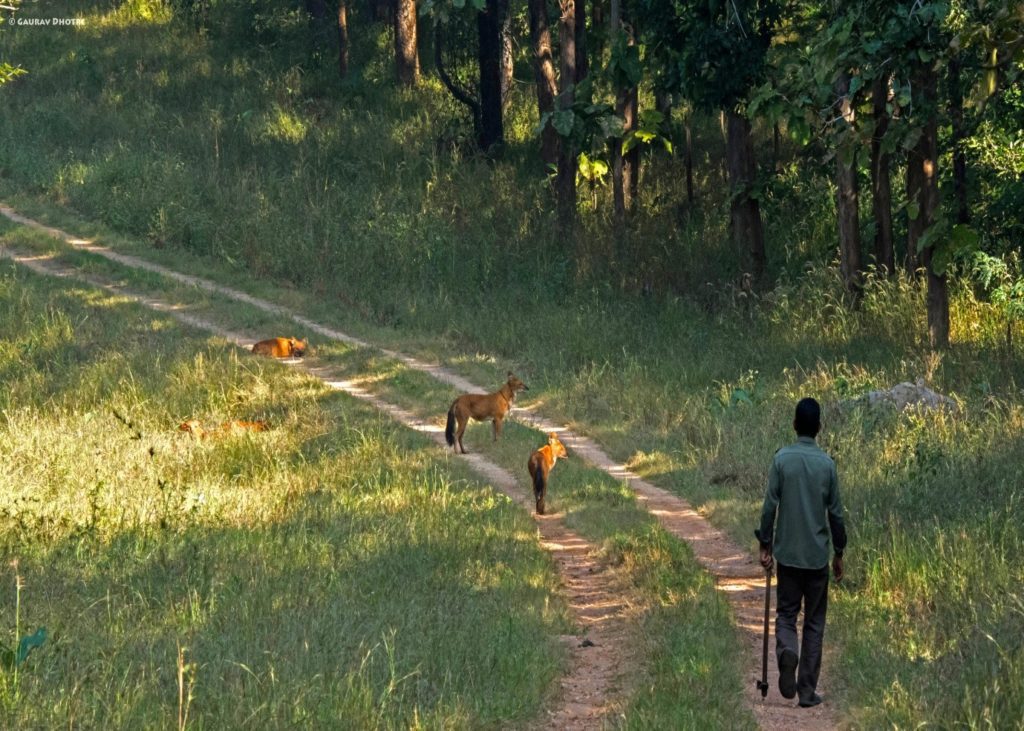
Due to the human dominance, excessive habitat loss and declining prey base has affected their population at a mass level. Despite the precarious status, Dhole population still thrive in India due to stringent conservation policies and managing the park at a full forced security.
Written by: Himani Singh Chouhan, Naturalist Pench Tree Lodge
Edited by: Natasha Sinha, Content Curator, Pugdundee Safaris
Visit our lodges in Kanha, Bandhavgarh, Pench, Satpura, Tadoba and Panna to watch various fascinating species of the forests frolic in the untamed wild. Get in touch with our trip curators at Pugdundee Safaris to book your next wildlife holiday.
Our trip curators at Pugdundee Safaris are more than happy to assist you. Phone: +91-011-40132680 Email: [email protected]

